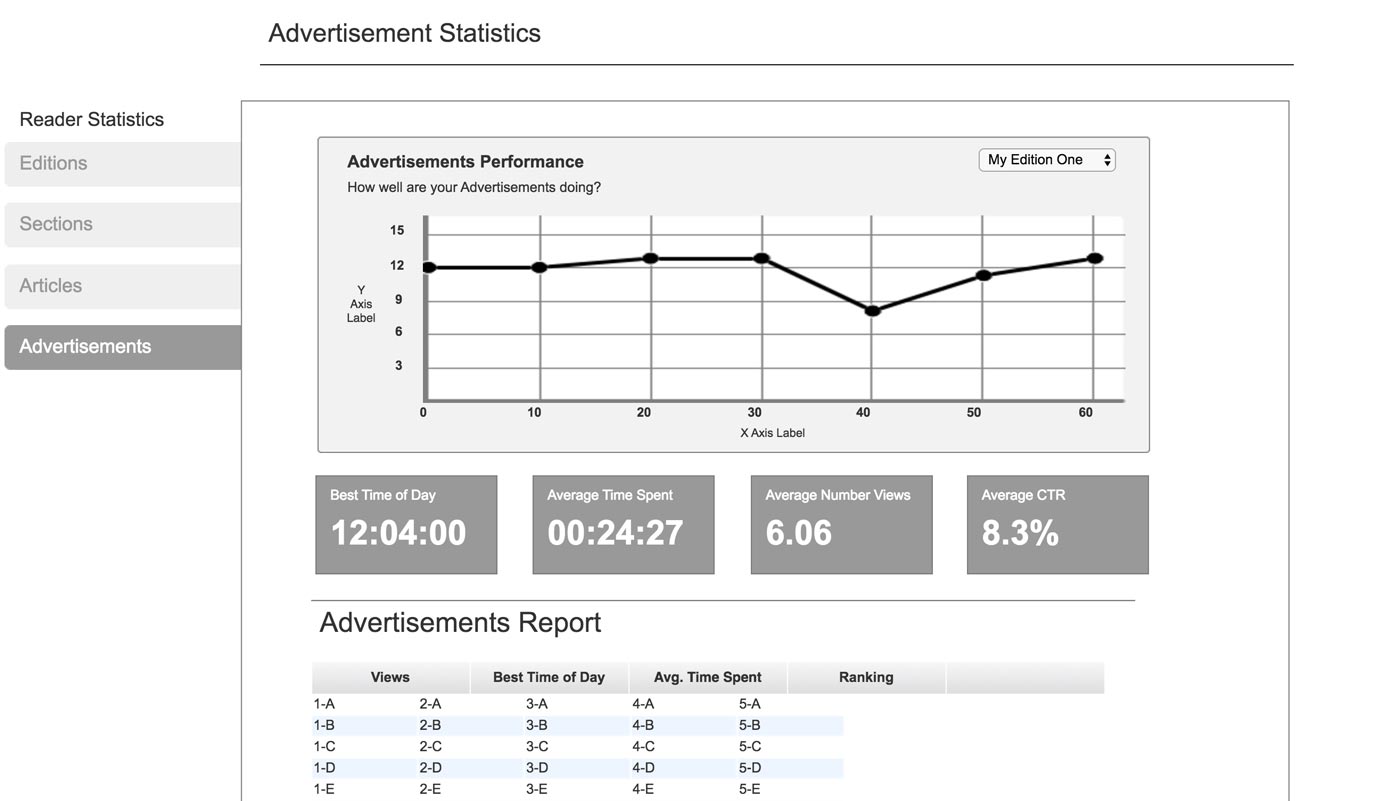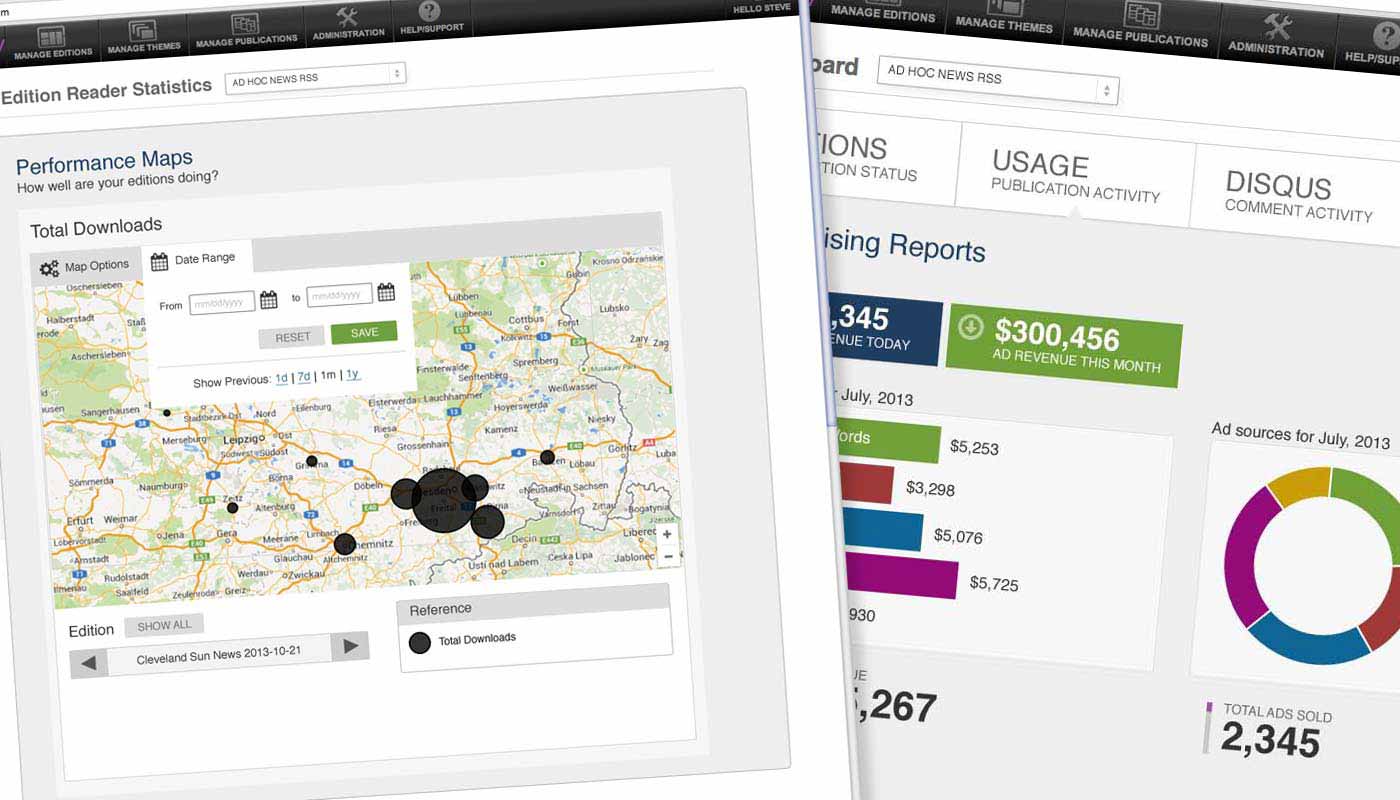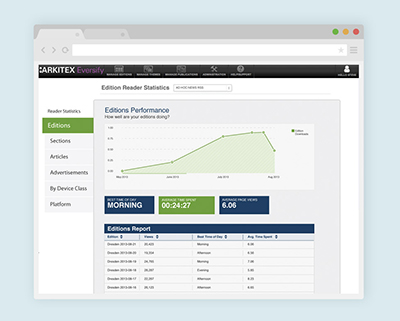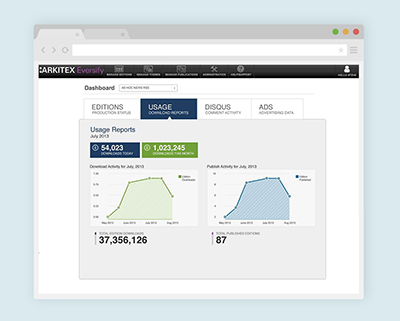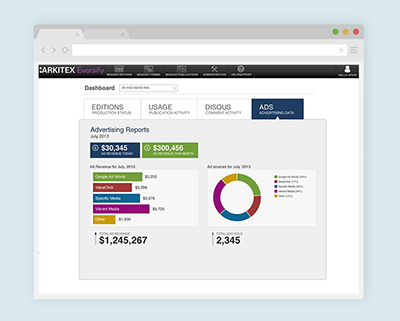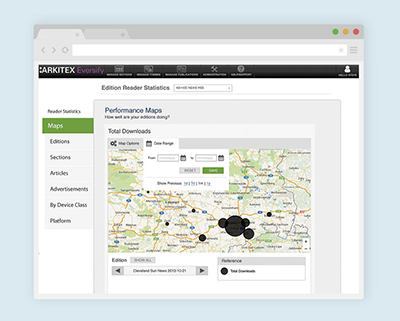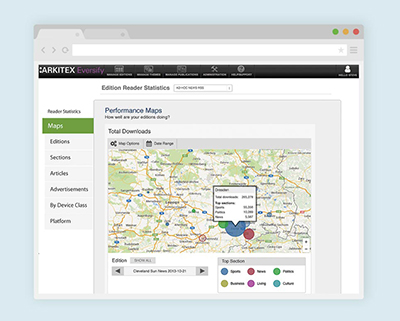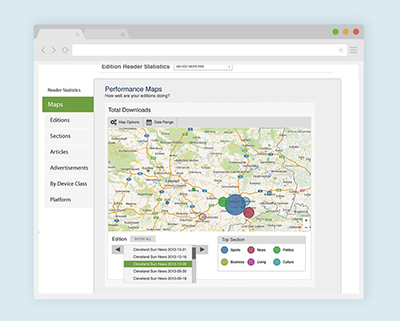Eversify Reader Data Visualization
THE CHALLENGE
In order to provide an analytics tool that could be sold to customers, we needed to deliver compelling information in new and interesting ways. The existing reader stats provided basic information, like the number of downloads. We needed to expand this, in order to find data that the customers could really use.
THE PROCESS
Working together with the project manager and other stakeholders, I collected user scenarios to determine what types of information would be most useful. These were broken down into a few main categories:
- Publication Data. This is where the user could find information about the editions and articles themselves. Which articles were most popular, what days were most popular?
- Comment Activity. Which articles were generating the most interactions from end users?
- Advertising. Tracking the performance of each ad.
